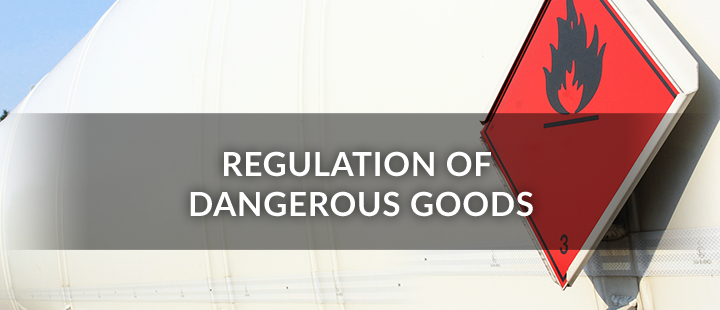Regulation of Dangerous Goods
Main ContentChapter 6.1 Precautions against Electrostatic Charges during Loading and Unloading
|
6.1.1 |
Legal Requirements
|
|
6.1.1.1 |
Pursuant to section 135 of Cap. 295G:
(1) When Class 2.1 S2DG, Class 3 S2DG or Class 3A S2DG is being loaded onto or unloaded from a tank or tank-container on a licensed vehicle, adequate precaution (as specified in the code of practice for the purposes of this subsection) must be taken to prevent the accumulation of electrostatic charges.
(2) If subsection (1) is contravened, the person who controls or operates the loading or unloading operation commits an offence and is liable on conviction to a fine at level 4 and to imprisonment for 1 month.
|
|
6.1.2 |
General Application
|
|
6.1.2.1 |
This chapter specifies the precautions to prevent the accumulation of electrostatic charges before and during loading onto or unloading from a tank or tank-container on a licensed vehicle for the purposes of section 135 of Cap. 295G. It applies to tank fixed on a licensed vehicle or a tank-container carried by a licensed vehicle containing Classes 2.1, 3 or 3A DG.
|
|
6.1.2.2 |
The precautions specified in this part are intended to prevent the accumulation of electrostatic charge on a licensed vehicle. Aspects related to occupational safety and health shall be referenced to other relevant ordinances and regulations.
|
|
6.1.2.3 |
Electrostatic charge is a potential ignition source and may cause a fire or explosion in a flammable atmosphere. Electrostatic charge can be built up due to:
(a) movement of the licensed vehicle during the journey; (b) movement of DG during loading and unloading; and (c) movement of workers involved in the loading and unloading process.
|
|
6.1.2.4 |
Generation of electrostatic charge varies with electrical conductivity of DG in liquid form. The lower the electrical conductivity32 of the DG, the faster the generation, vice versa. Static dissipative additive (SDA) can be added to increase the electrical conductivity of DG in order to reduce the generation of electrostatic charges.
32 Liquids are classified as high, medium or low conductivity in accordance with the criteria in IEC TS 60079-32-1:2013/A1:2017 or equivalent.
|
|
6.1.3 |
Precautions
|
|
6.1.3.1 |
The licensed vehicle shall be equipped with an earth cable and adequately earthed by connecting the earth cable to an earth terminal before loading or unloading of DG. The electrical resistance of the earth cable shall be less than or equal to 10 Ω. Apart from connecting the earth cable, earthing of the licensed vehicle during unloading can also be achieved by the contact of the anti-static tyres of the licensed vehicle and a static dissipative floor which the leakage resistance is 1 MΩ to 100 MΩ (conventional flooring material like bare concrete or steel grid are adequately conductive). In order to remain the effectiveness of static dissipation, such floor shall not be covered by insulation paint, rubber mats or plastic sheet, etc.
|
|
6.1.3.2 |
The tank or the tank-container, the chassis of the licensed vehicle, all metals or conducting components as well as all fixed equipment used to handle the DG shall be electrically bonded together to ensure electrical continuity. There shall be no loose conductive objects or spark promoters inside the tank or the tank-container.
|
|
6.1.3.3 |
The tyres of the licensed vehicle shall be of the anti-static type, the electrical resistance of which shall be in accordance with BS 2050 or equivalent, to prevent the accumulation of electrostatic charges during the journey.
|
|
6.1.3.4 |
During loading and unloading of DG in liquid form, a slow start with flow velocity of less than 1 m/s shall be employed until the fill pipe outlet is submerged to two pipe diameters. The flow rate of DG during loading and unloading shall be limited and splashing of DG shall be minimised in order to prevent the accumulation of electrostatic charges in accordance with IEC TS 60079-32-1:2013/A1:2017 or equivalent. Gravity unloading from the licensed vehicle is also acceptable provided that the DG is not of low electrical conductivity (the conductivity of DG can be increased by adding SDA).
|
|
6.1.3.5 |
Anti-static / dissipative clothing and footwear shall be worn by workers involved in the loading and unloading process, if required in accordance with IEC TS 60079-32-1:2013/A1:2017 or equivalent. Anti-static footwear with electrical resistance complying ISO 20345: 2011, GB 21148-2020 or equivalent is also acceptable provided that the DG is not of low electrical conductivity (the conductivity of DG can be increased by adding SDA). The workers shall not remove or change the clothing in a flammable atmosphere and shall ensure adequate earthing of themselves before handling the loading or unloading process. Any accessories that may cause electrostatic discharge, e.g. metal having sharp point, shall not be carried by workers.
|
|
6.1.4 |
Switch Loading33
|
|
6.1.4.1 |
It is important to note that switch loading, which is a process with a high risk of fire or explosion, shall not be conducted before the tank or tank-container is properly cleaned and degassed unless: (a) the DG is not of low electrical conductivity (the conductivity of DG can be increased by adding SDA); (b) the tank or tank-container is cleared of the residual DG previously conveyed; (c) bottom loading is employed to prevent splashing; and (d) loading velocity is limited to lower the generation of electrostatic charges.
33 According to NFPA 77, switch loading is the practice of loading a liquid having a high flashpoint and low conductivity (e.g. diesel) into a tank or the tank-container that previously contained a low flashpoint liquid (e.g. petrol). |


